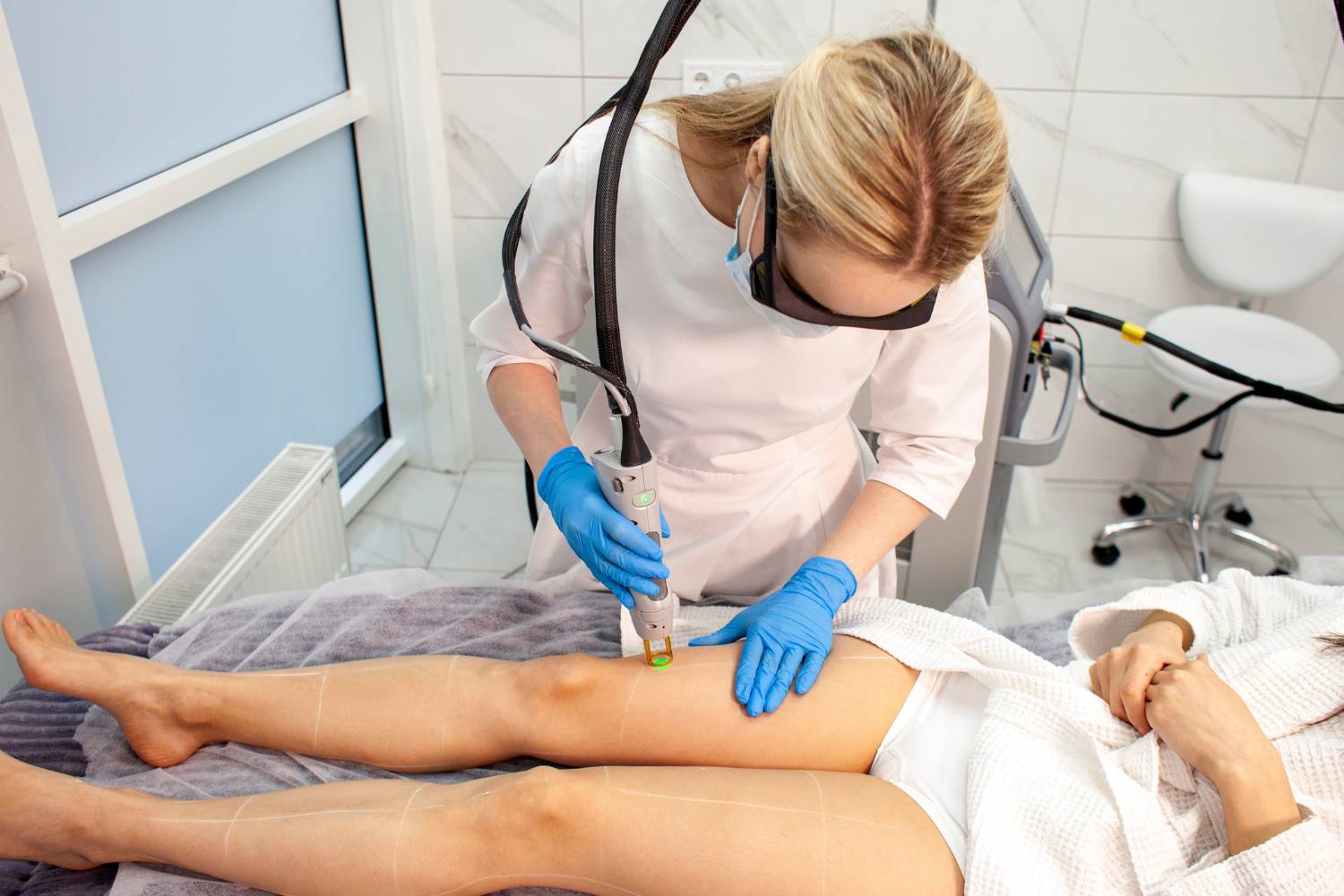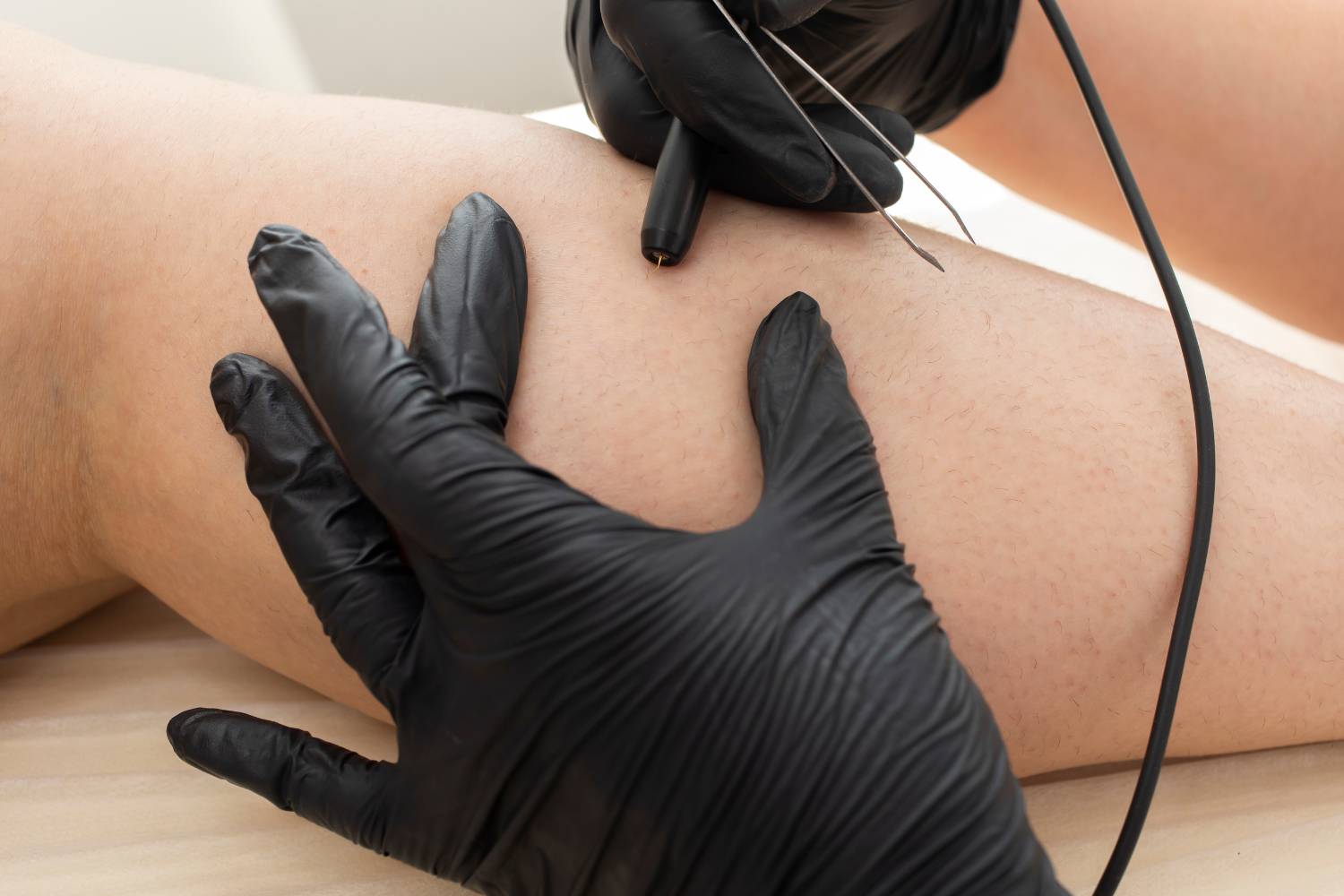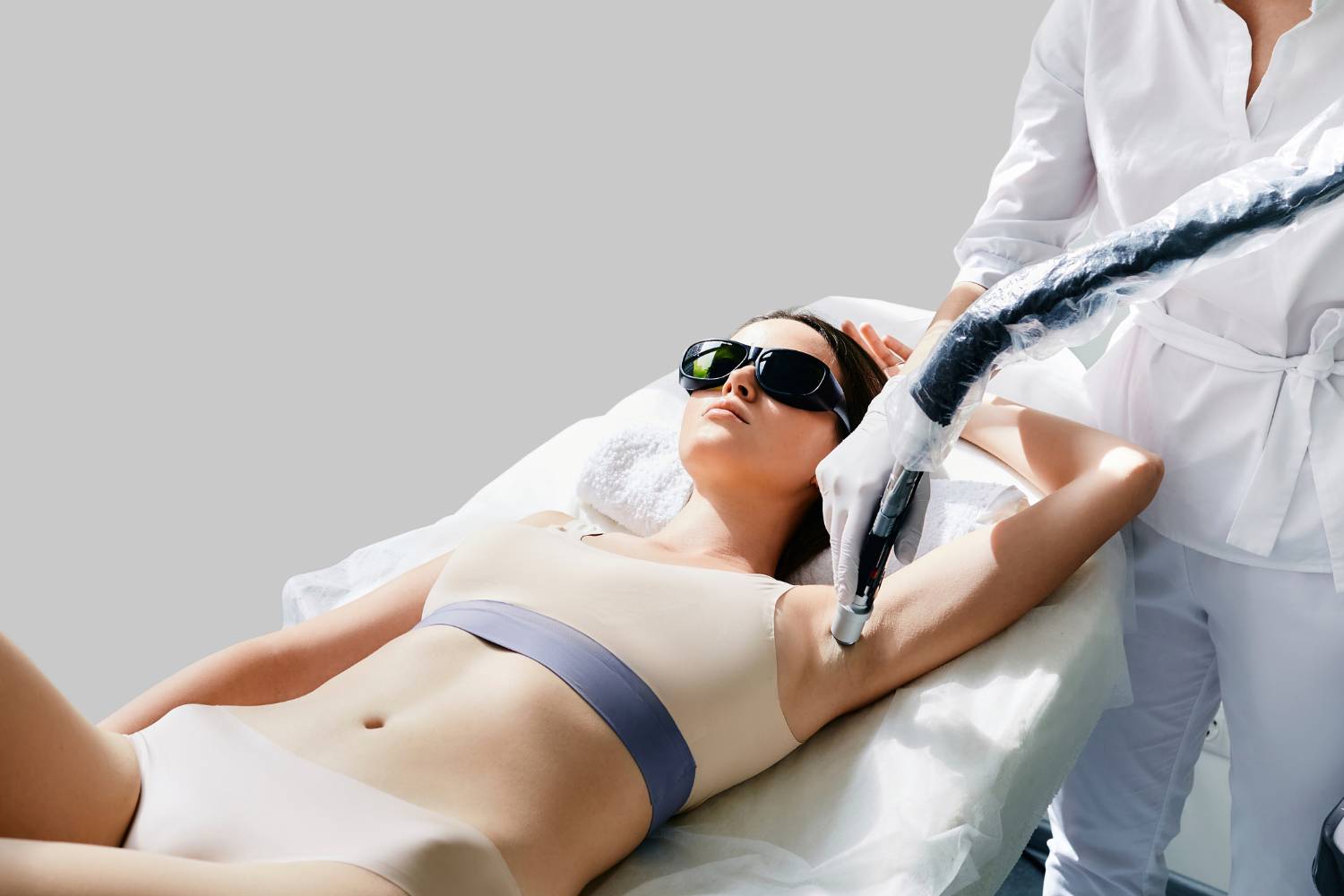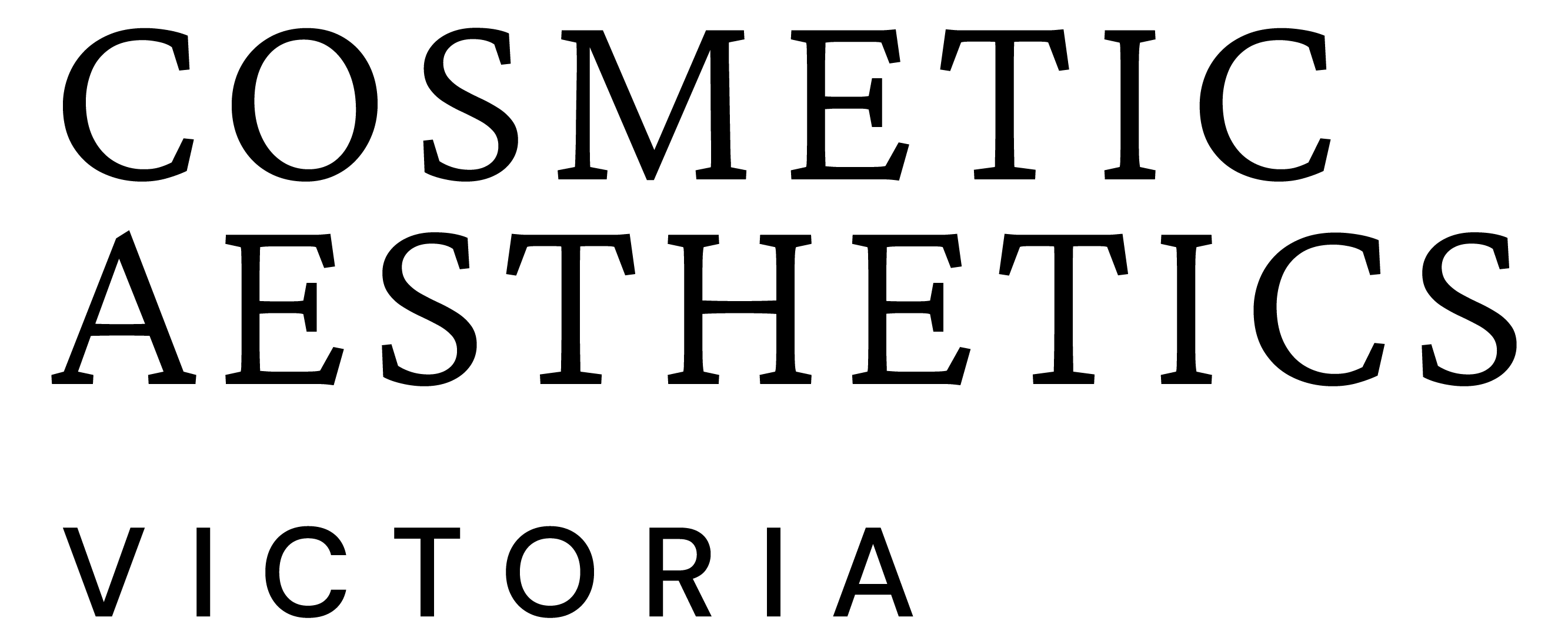
How Effective is Laser Hair Removal for Different Skin Types?
Laser hair removal has become a go-to treatment for long-term hair reduction, but its effectiveness can vary depending on your skin type. Understanding how different skin tones respond to laser technology is crucial for achieving safe and optimal results. In this blog, we’ll explore how laser hair removal works for various skin types, from fair to dark skin, and provide expert insights to guide you in choosing the right treatment for your unique needs.
Let’s explore into the science behind the technology and uncover what works best for your skin.
The Fitzpatrick Skin Scale And Its Impact On Laser Hair Removal
One of the first things I always discuss with clients when they come in for a laser hair removal consultation is their skin type. It’s crucial to understand that the effectiveness and safety of laser hair removal can vary significantly depending on your skin type. This is where the Fitzpatrick Skin Type Classification comes in – a system that categorises skin based on how it reacts to UV exposure.
For those unfamiliar with the Fitzpatrick scale, it ranges from Type I, which is the fairest skin that burns easily and never tans, to Type VI, the deepest dark skin that never burns and always tans. This scale is a game-changer when it comes to personalising laser treatments.
Having worked with clients from all walks of life, I’ve seen firsthand how the Fitzpatrick scale informs treatment decisions. For example, clients with Type I skin – think pale, porcelain skin with light eyes and hair – are generally the easiest to treat because of the high contrast between their skin and dark hair. This makes the laser’s job a whole lot simpler.
On the other hand, with Type VI skin, the process becomes more complex. Darker skin tones have higher levels of melanin, which can absorb laser energy, increasing the risk of burns or pigmentation changes if the wrong settings are used. This means the laser settings need to be adjusted carefully for darker skin to avoid complications.
How Skin Tone And Melanin Levels Influence Treatment Effectiveness?
From my experience, the amount of melanin in the skin plays a significant role in how well the treatment works. Here’s how it works: the laser targets melanin, the pigment that gives your hair its colour. So, when you have more melanin in your skin, there’s a higher chance that the laser will also affect the skin, not just the hair.
For lighter skin tones (Types I-III), there’s typically a sharp contrast between the dark hair and light skin, making it easier for the laser to identify and target the hair follicles without causing damage to the surrounding skin. I’ve found that treatments on lighter skin often require fewer sessions, and the results are usually quicker to see.
However, for darker skin tones (Types V-VI), the amount of melanin in both the skin and hair increases the complexity of the treatment. The laser can sometimes struggle to differentiate between the skin’s melanin and the hair’s melanin, which can lead to side effects like burns or pigmentation issues if the wrong laser or settings are used.
This is why laser hair removal for darker skin needs to be approached with care and using the right equipment, like Nd:YAG lasers, which are less likely to affect the skin due to their longer wavelength.

Choosing The Right Laser For Each Skin Tone
| Skin Tone (Fitzpatrick Type) | Recommended Laser(s) | Why It Works | Key Notes & Client Examples |
| Type I–II (Very Fair to Fair Skin) | Alexandrite (755nm) | Absorbs well into melanin in dark hair; low risk to surrounding skin | – Great for large areas (legs, back)- Fast, efficient- Example: Sarah saw dramatic hair reduction after a few sessions. |
| Type III (Light to Medium Skin) | Diode (810nm) | Deeper penetration for thicker hair; gentle on fair skin | – Effective balance of safety and performance- Often fewer sessions needed |
| Type IV (Medium Skin) | Diode (810nm)Nd:YAG (1064nm) | Diode: deeper, safer penetration:YAG: bypasses surface melanin, safer for darker undertones | – Settings must be customised- Example: John had successful treatment with Nd:YAG after a patch test |
| Type V–VI (Dark to Deep Skin) | Nd:YAG (1064nm) | Long wavelength bypasses skin melanin, targets the follicle directly | – Safest for dark skin- Minimal risk of burns or pigmentation- Example: Danielle saw excellent reduction with no pigmentation issues |
| Not Recommended for Dark Skin (V–VI) | Alexandrite (755nm) | Too aggressive; high risk of burns and hyperpigmentation | – Avoid unless used by highly experienced professionals with extreme care |
Hair Colour’s Influence On Laser Hair Removal Effectiveness
Why Dark Hair Achieves The Best Results?
When it comes to laser hair removal, the most important factor influencing success is the amount of melanin in the hair. Dark hair, regardless of the skin tone, responds best to laser treatment because of the high concentration of melanin. The laser targets this melanin in the hair follicle, which is why dark hair is the easiest to treat effectively.
I’ve had many clients with dark hair across various skin types, and the results are always impressive. For example, one of my clients, Michelle, has olive skin with dark, coarse hair. After a few sessions with a Diode laser (810nm), she noticed a dramatic reduction in hair regrowth on her legs and underarms. The high melanin content in her hair made it easy for the laser to precisely target the follicles without any significant risk to her skin.
In contrast, the contrast between skin and hair is key. The stronger the contrast, the better the results. In Michelle’s case, her dark hair and medium skin tone made it an ideal pairing for laser hair removal, allowing for faster results with fewer sessions.
Challenges In Treating Light Hair (Blonde, Red, Grey, And White)
Now, let’s talk about the other side of the spectrum: light hair. It’s no secret that treating blonde, red, grey, or white hair with traditional lasers is much trickier. Why? Light hair contains significantly less melanin, which makes it harder for lasers to identify and target the hair follicle.
From my own experience, I’ve treated clients with blonde or grey hair, and it’s not always straightforward. One example is James, who has light blonde hair and fair skin. While we tried to use our standard Alexandrite laser, we saw minimal reduction in hair regrowth after several sessions. The low melanin levels in his hair simply didn’t absorb enough of the laser’s energy, leading to slower results.
However, with advancements in technology, there are now advanced lasers that are better suited to treating lighter hair. For instance, longer wavelengths can help enhance melanin absorption in the hair. Additionally, there are topical treatments and technologies, such as melanin enhancers, which can be used alongside laser therapy to improve outcomes for light hair. It’s also important to note that clients with light hair will typically need more sessions than those with dark hair, due to the slower response.
Laser Hair Removal For Sensitive Skin And Specific Concerns
Laser Treatment For Sensitive Skin Types And Safe Practices
For those with sensitive skin, laser hair removal can still be a viable option, but it requires more thoughtful consideration. Over the years, I’ve seen clients with conditions like eczema, rosacea, and general skin irritation who were initially hesitant about laser treatments. However, with the right approach, these clients can achieve fantastic results with minimal irritation.
For example, when treating sensitive skin, I often start with a lower energy setting and gradually increase it as we go through the sessions. This way, the skin has a chance to adjust to the laser without triggering adverse reactions. I also recommend a cooling gel or ice pack after each session to soothe the treated area, which helps reduce redness and inflammation.
One particularly memorable case involved a client, Laura, who has very sensitive skin prone to redness and irritation. We used the Diode laser with a lower power setting, and she experienced very minimal discomfort. By adjusting the laser settings specifically for her skin type, we were able to achieve effective results on her legs, all while keeping her skin calm and irritation-free.
If you have sensitive skin, it’s crucial to discuss your concerns with your practitioner before treatment. With the proper adjustments, laser hair removal can be just as effective on sensitive skin as it is on other skin types.
Dark Skin Laser Safety And Risk Management
When it comes to dark skin, safety is paramount. Due to the higher concentration of melanin in the skin, there’s a higher chance that the skin itself could absorb the laser energy, which increases the risk of burns, hyperpigmentation, and discolouration. I always make it clear to clients with dark skin that using the correct technology and laser settings is vital for ensuring safety and minimising risks.
Over the years, I’ve worked with many clients with African-American skin, and one of the key things I’ve learned is that Nd:YAG lasers (1064nm) are the safest and most effective choice. The long wavelength of the Nd:YAG laser penetrates deeper into the skin, allowing it to bypass the melanin in the skin’s surface and target the hair follicle without causing damage to the surrounding skin.
A recent client of mine, Keisha, came in with concerns about dark skin laser safety. She was worried about the possibility of hyperpigmentation, which is a common concern for individuals with darker skin tones. After conducting a patch test and adjusting the settings of the Nd:YAG laser, we were able to achieve fantastic results without any adverse effects. Keisha was relieved to see that her skin remained healthy and smooth after treatment, and the hair regrowth was significantly reduced.
While there are risks with laser hair removal on dark skin, these can be minimised with the right choice of laser and settings. Patch testing and consultation with an experienced practitioner are crucial to ensure you’re getting the safest and most effective treatment.

IPL Vs. Laser: Which Is More Effective For Different Skin Tones?
| Feature | IPL (Intense Pulsed Light) | Laser Hair Removal |
| Light Technology | Broad-spectrum light | Single, focused wavelength (customisable) |
| Precision | Less targeted – affects the surrounding skin more | Highly targeted – penetrates deeply into the hair follicle |
| Suitability for Light Skin (Types I–III) | Moderately effective | Highly effective – longer-lasting results with fewer sessions |
| Suitability for Dark Skin (Types IV–VI) | Higher risk of burns and pigmentation issues | Safe and effective when using the Nd:YAG laser (1064nm) |
| Pigmentation Risk | High, especially for darker tones | Low when the correct laser and settings are used |
| Treatment Sessions Needed | More frequent results are often temporary | Fewer sessions, long-term hair reduction |
| Pain Level | Generally mild, but variable | Often more comfortable due to advanced cooling technology |
| Best Use Case | Temporary results or lighter hair removal | Permanent hair reduction for all skin tones (when correctly matched) |
Best Lasers For Darker Skin And Pigmentation Concerns
| Laser Type | Ideal For | Why It Works |
| Nd:YAG (1064nm) | Fitzpatrick Types IV–Clients with pigmentation concerns | Long wavelength bypasses melanin in skin, targets the follicle safely |
| Diode (810nm) | Medium to dark skin | Deep penetration, adaptable settings |
| Avoid: Alexandrite (755nm), IPL | Dark skin tones | Higher chance of burning or pigmentation issues |
Laser hair removal is a powerful and long-lasting solution for reducing unwanted hair, but its effectiveness can vary based on several factors, including skin type, hair colour, and the technology used. Over the years, I’ve seen firsthand how advancements in laser technology have made it possible to safely and effectively treat a wider range of skin tones, from light to dark, while also considering hair thickness and melanin levels. For darker skin tones, lasers like the Nd:YAG have proven to be the safest and most effective, while lighter skin types benefit from lasers like the Alexandrite.
Hair colour also plays a significant role, with dark hair being the easiest to treat due to its higher melanin content. However, for lighter hair shades, more sessions and advanced technology may be required. By consulting with an experienced practitioner and using the right technology, you can ensure safe and effective results tailored to your unique skin and hair characteristics.
